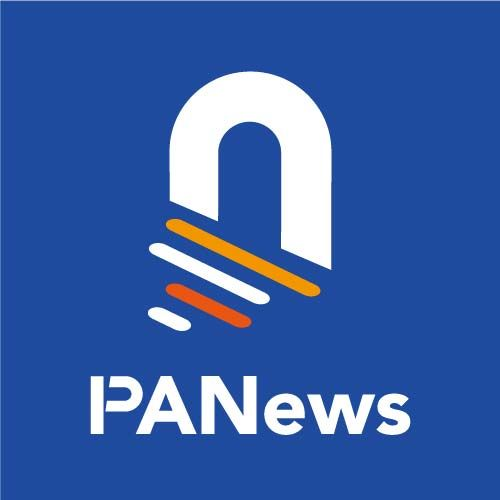Original author: Three Sigma , blockchain engineering and auditing firm
Original translation: Felix, PANews
The DeFi space continues to evolve, and the options market has made significant progress. New protocols, products, and strategies continue to emerge, reshaping decentralized options trading. It is important to revisit this changing landscape and evaluate the trends that are shaping the future of DeFi options. A year ago, the protocols were divided into 4 main categories:
Order Book
AMM (internal)
AMM (external)
Structured Products

Since then, protocols in each category have undergone significant changes. Some protocols have expanded aggressively, while others have pivoted to new models or, unfortunately, shut down. The outlook is both challenging and promising, and survival in this fast-paced environment is by no means guaranteed.
As @DanDeFiEd (founder of Rysk Finance) mentioned in his derivatives speech at the Federal Polytechnic of Milan last year, Some of you are NGMI. (PANews Note: NGMI is the abbreviation of Not gonna make it, which means that you cant succeed). His words proved to be prophetic. 50% of the protocols mentioned in the original report have either abandoned the options business or ceased operations. The DeFi ecosystem can be ruthless, and only the most adaptable will survive.
But why is the elimination rate so high?
Point systems and MEME coins have dominated the past year, raising questions about sustainability and value creation. The preference for perpetual contracts to gain leverage has been a key challenge for many options protocols struggling to find product-market fit (PMF).
In addition, the rise of point trading has diverted attention and liquidity from more complex structured products such as options.
Have the protocols that struggled last year successfully adapted, or has the increased focus on perpetuities and short-term rewards sealed their fate? The answers are as varied as the projects themselves, but one thing is certain: the road ahead is only going to get harder.
Overall Trend
“[…] According to our estimates, the retail share of options volume in the U.S. equity market is […] 45%, […]. The growth in retail options share was initially driven by the 2020 pandemic and has continued to grow as retail options traders seize short-term options to bet on market direction. The volume share of low-priced options is also increasing, further driving overall options volume, especially retail trading. None of these trends appear to be in danger of reversing.”
NYSE - Options Trading Trends, December 2023
In traditional finance (TradFi), retail traders are increasingly interested in high-risk, short-term options. This shift is evident in the data: weekly options trading volume has doubled, climbing from about 100 million contracts per week in 2018 to 200 million contracts in 2024. This means that the number of weekly openings and closings has increased significantly.
As retail traders outside of the crypto space lean heavily toward short-term, highly leveraged opportunities, the question arises: Can DeFi options capitalize on the same momentum? Or will perpetual options continue to dominate the crypto leverage narrative?
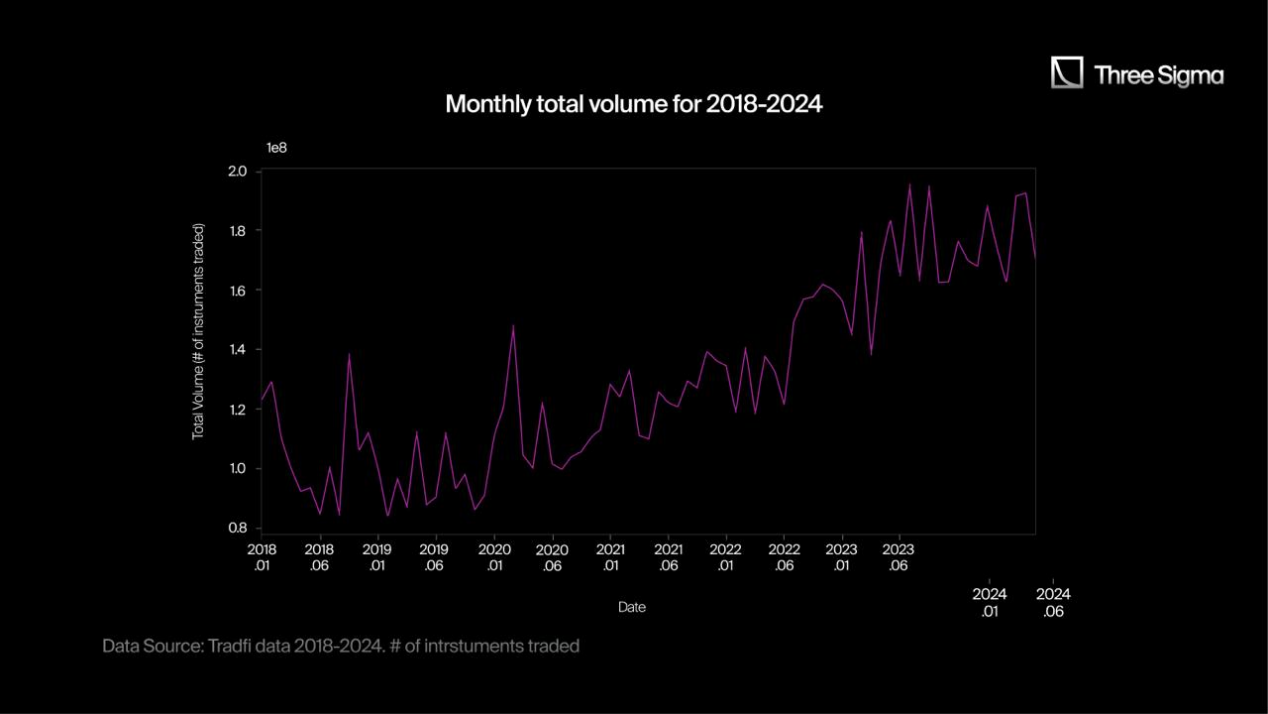
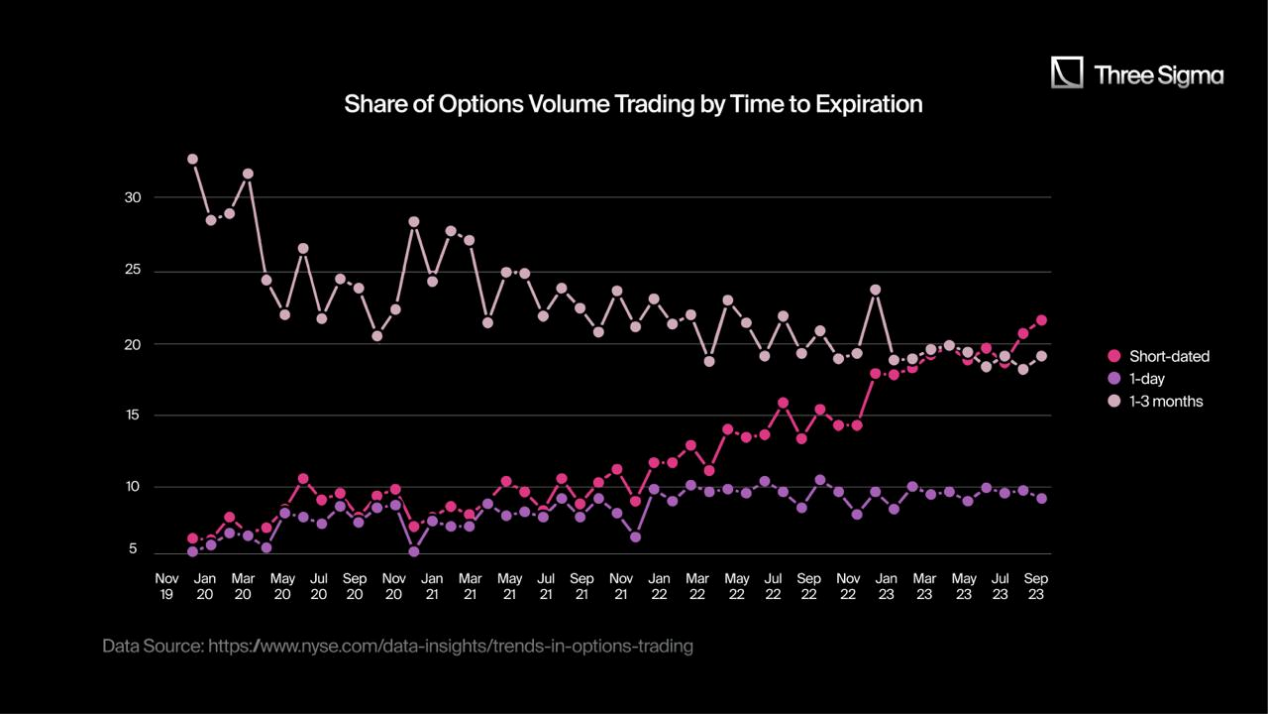

DeFi options development
“We found PMF” — Founder to an unsuspecting VC
“Huuugeee TAM” — same founder to same unsuspecting VC
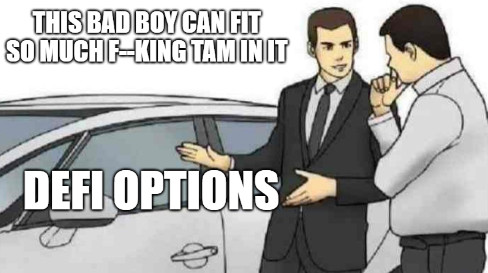
Options libraries like Ribbon gained popularity and sparked interest in the DeFi community throughout 2022. However, as the initial excitement faded, notional volumes began to steadily decline from the end of 2022 through 2023. This downturn reflects the broader challenges that DeFi options protocols face in maintaining momentum.
However, by 2024, things started to change. The introduction of new exchanges and products, such as AEVO, Derive (Lyras application chain), and Stryke, helped to rekindle interest in the field and gradually regain market share. The following are notional transaction volume data:
September 2021: $392 million
September 2022: $411 million (+1.05x YoY)
September 2023: $78 million (down 0.19x year-over-year, with transaction volume down 81%)
September 2024: $866 million (up 10.99% year-over-year)
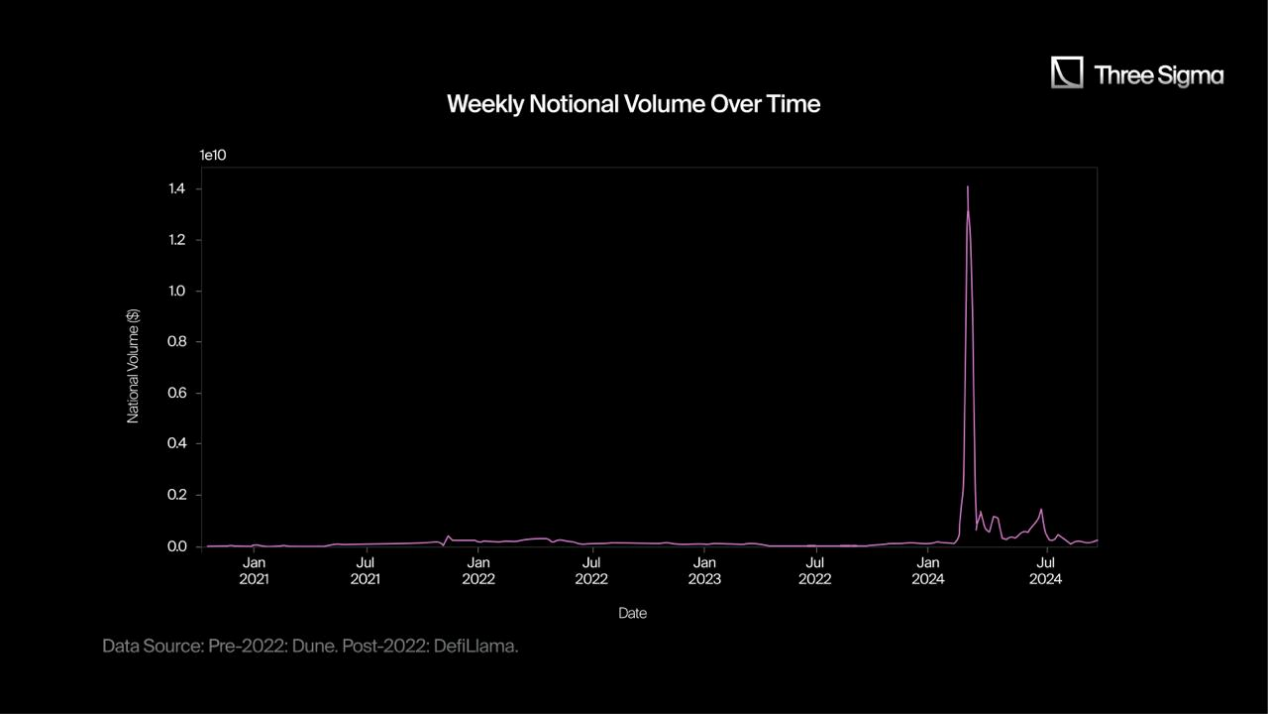
In addition to the surge in notional volume, another key indicator of market health is premium volume – the amount buyers pay sellers for options. Data evidence of a strong recovery from 2022 to 2024:
September 2022: $3.8 million
September 2023: $3.3 million (year-over-year change: 0.87x)
September 2024: $10.3 million (Year-over-year change: 3.11x)
The growth in premium volume highlights new demand for DeFi options, as buyers are willing to pay significantly higher premiums in 2024 than in previous years. This reflects a shift in the market, with new products and more sophisticated strategies driving increased participation and confidence in the options space.
While notional volume surged 18x between 2023 and 2024, liquidity provider (LP) premiums grew only 3.7x. This discrepancy suggests that while trading activity has surged, much of it is driven by cheap options, most likely out-of-the-money (OTM). High volumes may be impressive, but low premium growth suggests the market is still dominated by low-cost, high-risk options.
Options vs. Perpetual Contracts: The Battle for Dominance
Despite the rapid growth of DeFi options, perpetual contracts still dominate.
Although the gap between the two is still large, it is gradually narrowing. In 2022 and 2023, perpetual contracts traded between $10 billion and $12 billion per week on-chain, and by 2024, this number grew to $41 billion. At the same time, options trading volume is still about 1/100 of that of perpetual contracts.
September 2022: Perpetual swaps have 85x more trading volume than options
September 2023: The gap widens to 400x
September 2024: 160 times smaller

While the DeFi options space has struggled to match the scale of perpetual swaps, there is hope. When reviewing research from a year ago, it was clear that the industry was growing, albeit unevenly. Most users still prefer perpetual swaps due to their ease of use and high liquidity, putting options protocols in a more challenging position.
The options space is heavily obscured, with many projects continuing to struggle with PMFs in a market still dominated by perpetual contracts.
The key question remains: where will future demand for DeFi options come from? Can DeFi options carve out their own niche as traders seek more sophisticated strategies, or will perpetual contracts continue to dominate the on-chain derivatives space?
New faces
As DeFi options continue to develop, some new protocols have emerged. Here is a brief analysis of these new players:
Order Book/Request for Quote (RFQ)
Arrow Markets — Using RFQ system and launching on Avalanche
Ithaca — features off-chain order books and on-chain settlement
Predy V 6 — Intent-based options expected soon
Valorem — is using an off-chain streaming RFQ system. Sadly it is outdated.
External AMM
Limitless — An oracle-free and liquidation-free platform where Uniswap LPs can generate yield by lending it to traders/borrowers even when their liquidity positions are out of bounds.
Structured Products
3 Jane — Ribbon fork, early depositors can get more benefits.
Strands — A structured product based on Lyra and CME that allows traders to tokenize their covered call options.
SuperHedge — allows users to deploy assets on platforms like AAVE or Ethena, stake yield tokens on Pendle, and use part of the proceeds to purchase options.
Other protocols
ClearDAO — Provides options SDK.
Jasper Vault — provides 0 DTE and 2-hour options with permissioned liquidity and internal pricing oracles.
Sharwa (Dedelend) — Originally an aggregator of Ryks, Hegic, Premia, etc., the upcoming release will introduce 10x leverage using WBTC, WETH, and USDC as collateral, powered by Hegic.
tealfinance — is an aggregator that compares prices on different platforms (such as bitbit).
Umoja — Create synthetic options by adjusting positions in a portfolio of tokens and perpetual contracts based on market movements.
Order Book
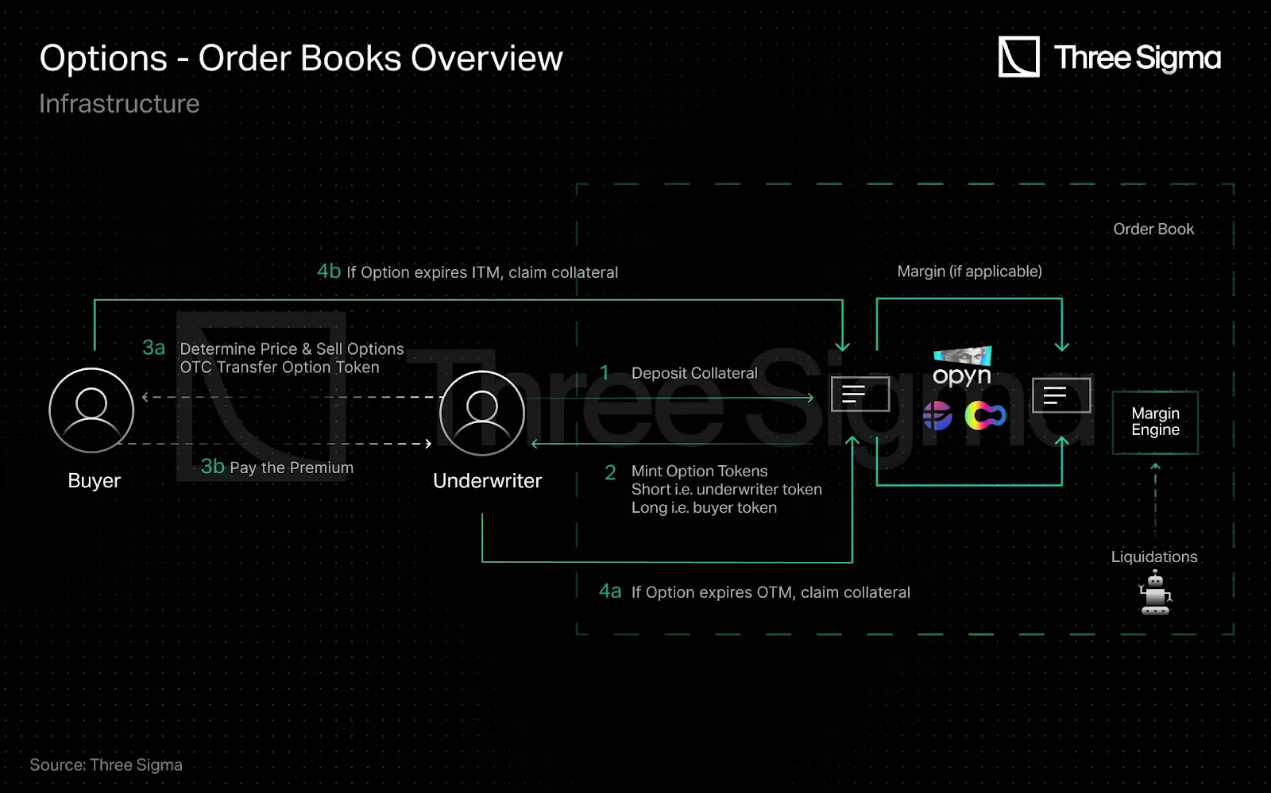
The order book landscape in the DeFi options space can be divided into two categories: protocols that provide order books as infrastructure for others to build, and protocols that serve as trading platforms. The truth is brutal, 3 out of 6 are out. Let’s take a deeper look at what happened:
Still developing:
AEVO — The rise of a top contender in the on-chain options market is simple: Points mining. AEVO offers traders the ability to go 10x long on a single Bitcoin with proper collateral, or buy ultra-cheap out-of-the-money (OTM) options. For example, an option with a notional value of $40,000 can be purchased for just pennies if the seller is willing to underwrite it.
(PANews Note: Out-of-the-money options refer to options whose strike price makes them have no intrinsic value. For call options, the strike price is higher than the current market price; for put options, the strike price is lower than the market price)
This has brought AEVO’s monthly trading volume to billions of dollars, setting a new all-time high for the protocol and the entire on-chain options market.
While notional volume has surged, premiums remain low due to the large volume of forward OTM options. Consider that March volume was $16 billion, compared to $2 billion in April — despite an 8x increase in volume, premiums are only 50% higher ($8.2 million vs. $5.3 million). Even without the point mining program, AEVO remains one of the protocols with the highest notional volume.
Derive (fka Lyra) — After transitioning from the Synthetix ecosystem, Derive now runs its application chain Derive Chain on the Optimism (OP) Stack. By moving to an order book model, Derive provides a more efficient trading experience, settling between $200-300 million in monthly volume.
Opium — once a base layer infrastructure provider, has shifted to focus on zero-day expiration (0 DTE) options, reflecting the retail market’s growing interest in short- to medium-term instruments in TradFi.
Stay away from options business or fail
Opyn — Despite early success with its options suite, Opyn never generated any revenue from it. The team has since moved to perpetual contracts.
Psyoptions — defunct with no clear direction.
Zeta — has abandoned options and is now fully committed to perpetual contracts, which has proven to be more sustainable for them.

AMM (internal)
Protocols that use internal AMMs to price options. Some protocols have complex liquidity provision strategies, while others are simpler and rely more on the risk of their LPs. Today, 3 out of 10 protocols have pivoted or shut down.
Still developing:
Deri — With the launch of V4 protocol, Deri has attracted a lot of capital on Linea and now offers perpetual contracts and perpetual derivatives, with its liquidity pool acting as the counterparty to all trades.
Hegic — launched 0 DTE options in the summer of 2024, but its core product, one-click strategies, has remained the same for years.
IVX — provides 0 DTE on Berachain.
Premia — V3 uses a hybrid model that combines CLAMM on Arbitrum One and on-chain order books on Arbitrum Nova. With monthly volumes between $6 million and $15 million, the team plans to launch premium V4, improving collateralization and introducing perpetual contracts.
Rysk — After the success of V1, Rysk is now focused on building Rysk V2 which will create vaults for decentralized order book DEXs, allowing market makers to sign orders from these vaults.
Stryke (fka DoPeX) — successfully revamped their AMM by introducing CLAMM and managed to turn things around. In the past year, monthly trading volumes have reached $20-50 million. During the rebranding process, Stryke also migrated from their dual-token model (DPX/rDPX) to SYK, deprecating the rDPX token. Now, xSYK represents the staking version of the SYK token.
Thales — Provides support for trading binary options and on-chain derivatives on the Ethereum network. Despite the protocol’s niche nature, it has consistently seen around $5 million in monthly trading volume. However, as of the second half of 2024, trading volume has fallen to $1 million per month, down from higher levels earlier this year.
Stay away from options business or lose:
Ntropika — They never seemed to launch successfully. Despite raising $3.2M from tier-one VCs in August 2020 and another $12M from NFT sales in 2022, there has been almost no movement since then. Rug pull? Development issues? The community is clueless.
Oddz — Originally an options-AMM protocol, Oddz later pivoted to become a perpetual options aggregator.
Siren — Once AMM-based, it has moved to an oracle/RFQ system with off-chain pricing managed by a select group of whitelisted providers (called Siren Guardians).
AMM (external)
What do we mean by external AMMs? These protocols leverage third-party spot AMMs (like Uniswap or Balancer) as a base layer to enable others to trade options seamlessly. All 3 are in operation today.
GammaSwap — Launched on Arbitrum, GammaSwap offers over 20 assets. A key development is that they now use an internal spot AMM (Delta Swap) to power the platform, rather than Balancer or Uniswap. Since launching in January 2024, the protocol has facilitated ~$130M in notional volume, an average of $13M per month.
Panoptic — After several alpha tests on L2s and alt-L1s, it is preparing for its mainnet launch and is expected to be online before the end of 2024.
Smilee — Launched on Arbitrum, Smilee offers wETH, wBTC, GMX, and ARB options. Since launching in March 2024, the protocol has seen ~$71M in notional volume, averaging ~$10M per month.
Structured Products
This space once accounted for the lion’s share of DeFi options TVL, but its luster has clearly faded — 9 out of 13 protocols have adapted or discontinued their products.
Still developing:
Cega — continues to offer knock-in and knock-out vaults, expands beyond Solana, and integrates the Pendle YT token for additional benefits.
PODS — Still active, using yield-generating assets (stETH, aUSDC) to purchase options offers a unique approach compared to other structured products.
Ribbon — Although TVL has dropped and the team’s focus has shifted to AEVO, Ribbon is still operating.
Thetanuts — Continues to operate, with the most recent vault focused on Pendle’s PT token.
Stay away from options business or lose:
Cally and Putty Finance — Both protocols are struggling to find product-market fit as the NFT market cools.
JonesDAO — Deprecated its options vault, signaling their end of involvement in the options space.
Katana – Acquired by PsyFi on April 4, 2023 in a merger and acquisition transaction.
Knox Vaults - integrated into Premias V3 ecosystem as part of a broader strategic shift.
Polynomial — pivoting to become a derivatives L2, now focused on perpetual contracts.
Polysynth (now Olive) — Shutting down options vaults and moving to becoming a universal aggregated liquidity layer across L1 and L2.
Primitive — Did not gain significant traction. The team is currently focused on building Pluto (Pluto Labs)
PsyOptions — Despite the acquisition of Katana, PsyOptions closed its vault and other products in June 2024.
StakeDAO — No longer offers options vaults.
Will history repeat itself?
The resurgence of on-chain options volume, led by order books like AEVO and Derive, bodes well for the future, but it raises important questions about decentralization. Like perpetual markets, being fully on-chain and decentralized may no longer be as attractive as it once was. Instead, protocols are turning to centralized L2s or app chains to better control the key parameters needed to build efficient order books.
New protocols like GammaSwap and Smilee offer hope for attracting new users to options trading, but the market remains brutal and unforgiving. As the saying goes, history doesn’t repeat itself, but it often rhymes. It’s very likely that within a year, several of the protocols listed here will no longer be operational, a testament to the ruthless and fast-moving nature of the DeFi market.
However, despite the challenges, the increase in options trading activity is undeniable. As the perpetual contract market size is still about 100 times larger than the options market size, the challenge for options protocols is to make their products accessible to less experienced users.
Related reading: Everything is ready, only the east wind is missing: Exploring decentralized options

